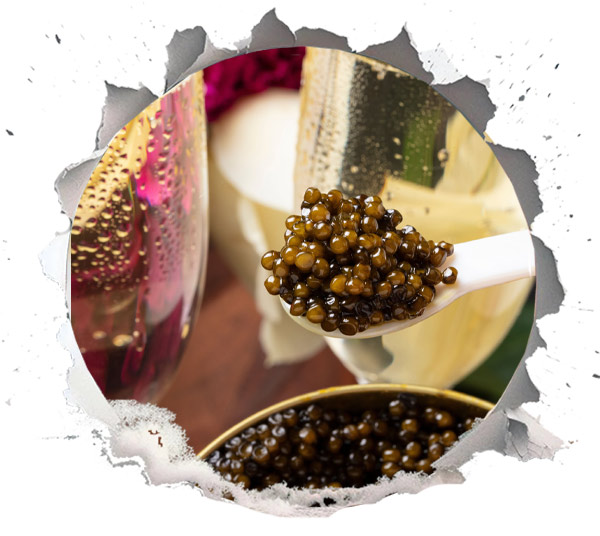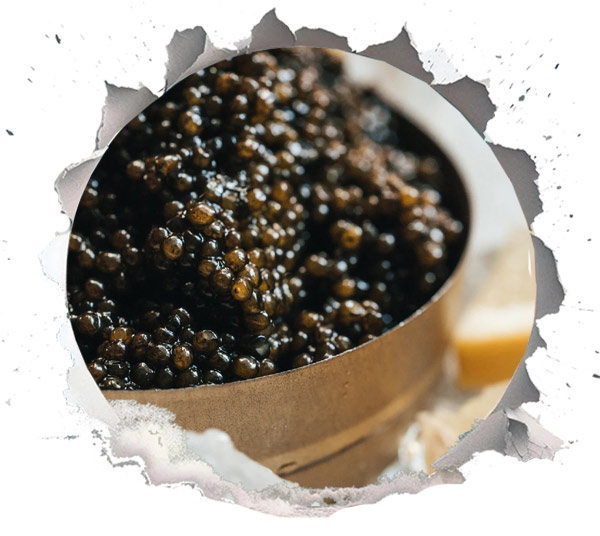The Hidden Downsides of Caviar: Facts About Caviar Cons

Caviar, often regarded as a luxurious delicacy, has been a symbol of opulence and gourmet dining for centuries. Its rich taste and texture make it a sought-after ingredient in haute cuisine. However, beneath its glittering surface lies a variety of downsides that often go unnoticed by consumers. In this article, we will explore the hidden downsides of caviar, providing you with a well-rounded understanding of its cons, from environmental impacts and health concerns to ethical dilemmas
The Allure of Caviar
Caviar has long been celebrated in European culture, frequently associated with sophistication and indulgence. Its unique flavour profile and delicate texture make it a popular choice for upscale dining experiences and special occasions. Traditionally served atop blinis or alongside crème fraîche, caviar elevates a meal to an extraordinary level. However, while it may be a staple at lavish banquets, the implications surrounding its production are often overlooked.
1. Caviar Cons for Environment

Overfishing and Endangered Species
One of the most significant downsides of caviar production is the environmental impact of overfishing. Many species of sturgeon, from which caviar is harvested, are endangered due to decades of overfishing and habitat destruction. According to the World Wildlife Fund (WWF), the population of wild sturgeon has decreased by over 90% in the last century. The International Union for Conservation of Nature (IUCN) lists several sturgeon species as critically endangered, raising serious concerns about the sustainability of caviar production.
Habitat Destruction
In addition to overfishing, the habitats of sturgeon are severely impacted by pollution, dam construction, and river modifications. These activities lead to the degradation of water quality and disrupt the natural spawning grounds of these fish. The decline in sturgeon populations not only threatens the species but also disrupts entire ecosystems.
2. Caviar Cons for Health

High Sodium Content
While caviar is often celebrated for its nutritional benefits, it is essential to consider its high sodium content. A single ounce of caviar can contain over 600 milligrams of sodium, which is approximately 27% of the recommended daily intake. Excessive sodium consumption can lead to various health issues, including hypertension, heart disease, and stroke. So be careful about how much you use.
Risk of Contaminants
Another health concern associated with caviar is the potential for contamination. Sturgeon often inhabit polluted waters, and their roe can accumulate harmful substances such as heavy metals, polychlorinated biphenyls (PCBs), and other toxins. Consuming contaminated caviar can pose serious health risks, particularly for pregnant women and young children, who are more susceptible to the effects of toxins.
Allergies
Although rare, some individuals may experience allergic reactions to caviar. Symptoms can range from mild itching and hives to severe anaphylactic reactions. If you have a known fish allergy, it is crucial to avoid caviar altogether.
3. Caviar’s Ethical Cons

Animal Welfare Concerns
The process of harvesting caviar raises significant ethical questions regarding animal welfare. To obtain caviar, sturgeon are often killed, or their eggs are forcibly extracted, which can be a traumatic experience for the fish. Some producers have adopted humane practices, such as “no-kill” methods that involve extracting eggs without harming the fish. However, these methods are not universally practised, and many consumers may unknowingly support inhumane practices.
Socioeconomic Issues
The caviar industry can also perpetuate socioeconomic disparities. In regions where sturgeon are native, local communities often depend on sustainable fishing for their livelihoods. However, the high demand for caviar has led to illegal fishing practices that undermine local economies and threaten traditional fishing communities. This has resulted in a cycle of exploitation that affects both the environment and the people who rely on it.
4. Misleading Marketing

Farmed vs. Wild Caviar
As consumers become more environmentally conscious, the caviar industry has responded by promoting “farmed” caviar as a sustainable alternative to “wild” caviar. Caviar farming can help alleviate pressure on wild sturgeon populations, but it is essential to be aware that not all farmed caviar is created equal. Some farms engage in practices that harm the environment, such as using antibiotics or feeding fish meal from unsustainable sources.
Price and Quality Disparities
The price of caviar can be misleading. Lower-priced caviars may be marketed as premium products, often containing lower-quality roe from less desirable species. Consumers should be cautious and do their research before purchasing caviar, as the quality can significantly impact the taste and overall experience.
Weighing the Pros and Cons of Caviar
Caviar is undoubtedly a luxurious delicacy that can elevate any dining experience. However, as we have explored, it is crucial to consider the hidden downsides associated with its production and consumption. From environmental impacts and health risks to ethical dilemmas and misleading marketing, consumers must weigh these factors when indulging in this gourmet treat. Despite its allure, the caviar pros should be carefully balanced against these significant concerns.
Making Informed Choices
If you choose to enjoy caviar, consider seeking out sustainably sourced and ethically produced options. Look for certifications that indicate responsible practices, such as those from the Marine Stewardship Council (MSC) or the Aquaculture Stewardship Council (ASC). Additionally, be mindful of your sodium intake and potential contaminants associated with caviar consumption.
By making informed choices, you can enjoy caviar while minimising your impact on the environment and supporting ethical practices within the industry.
Culture Caviar is a brand that is particularly concerned about these environmental issues. Culture Caviar’s products are harvested from farms that employ environmentally friendly methods, ensuring that consumers can enjoy their caviar with the knowledge that it has not caused damage to natural habitats. Furthermore, Culture Caviar adheres to legal and standardised practices, offering a product that is both ethical and sustainable.
Final Thoughts
Caviar may be a symbol of luxury, but it is essential to recognise the complexities behind this exquisite delicacy. As consumers, we have the power to influence the industry by demanding transparency and sustainability. The next time you indulge in caviar, take a moment to appreciate not only its rich flavour but also the broader implications of your choice. Hope you’d liked this article, also, you can find out more about the most expensive caviar here.


Thanks for your article
And thanks to Culture for helping environmental behaviours